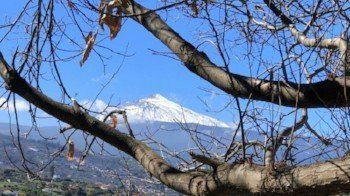EL TEIDE, OUR VOLCANO
READ ABOUT THE VOLCANO
Our Guanche ancestors said that in Teide inhabits
Guayota... that in its cosmogony it represented the threatening and devastating spirit of the Teide eruptions ...
The Teide is a stratovolcano, of compound type, which with its 3,718 mtrs rises almost 2,000 mtrs from the caldera that forms the impressive building of the Cañadas del Teide and Pico Viejo.
From the time of the incorporation of the island of Tenerife to the Spanish Crown there have been several eruptions, although none in the Teide crater, the most important of which is Boca Cangrejo in the south of the island, which is referenced in 1492 by Cristobal Columbus in his logbook on the road to the discovery of America, those of 1704-1706 of Fasnia, Siete Fuentes and Garachico, the last one being November 1909 in Chinyero.
The historical eruptions that have taken place in the last 500 years have been in the rifts northeast and northwest, in medium altitudes, except the one of chahorra in 1798 in the dorsal of Pico Viejo, being eruptions of effusive, strombolian and effusive type, although recent studies of IGN experts (2017) indicate a higher explosive index than initially expected in the Chinyero eruption.
There are, however, geological evidences that have been analyzed with profusion in recent years that almost all of the eruptions in the volcanic building of the Teide-Pico Viejo canyons are of phonolitic material and ignimbrites, high viscosity magma and siliceous content, which usually leads to eruptions of the Plinian or Sub-Plinian type with high explosiveness and volume of material emitted, with a volume of material emitted close to 1 Km3 in some of them.
This differentiation in the typology and danger in volcanic eruptions of Teide, depending on the place (height) in which they occur, may be due to a phenomenon of fractional crystallization of magma as suggested by various American and European experts in an article published in the year 2015 in the 'Journal of Petrology, Vol 56, N 11' in which a simulation was carried out with a very advanced software that reached this conclusion.





